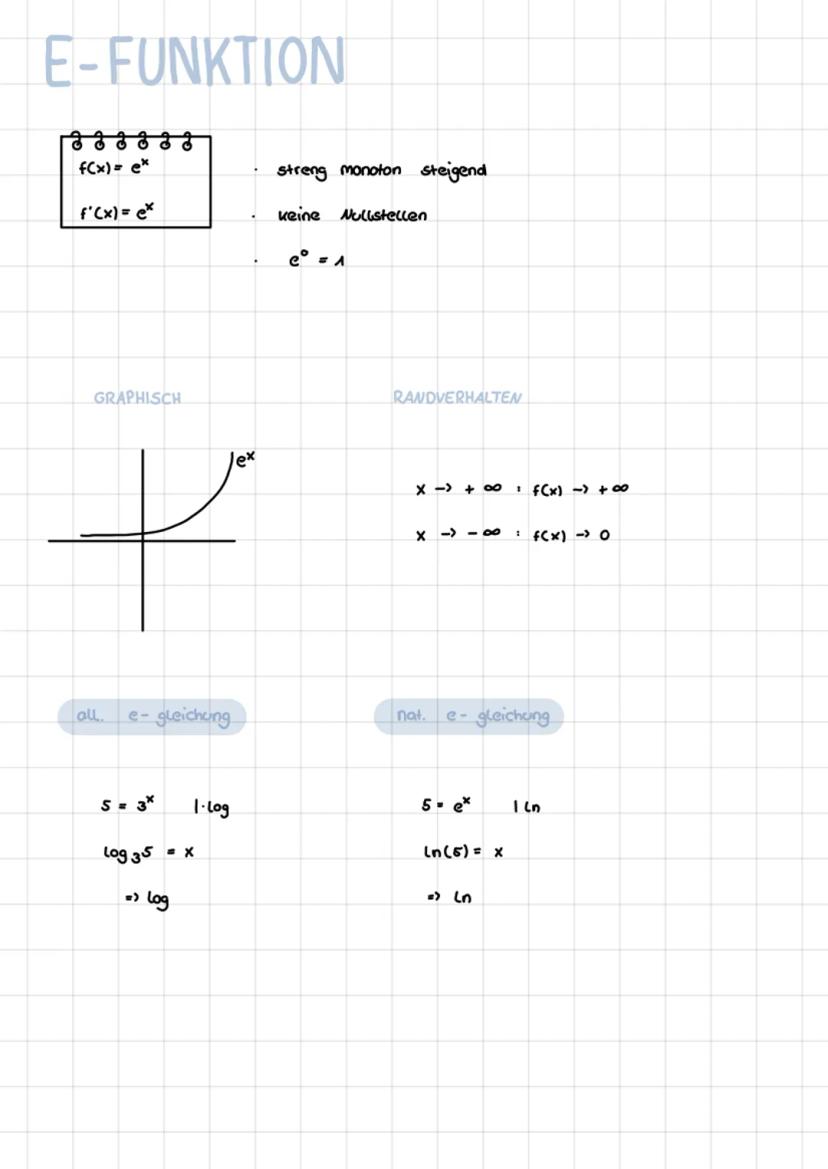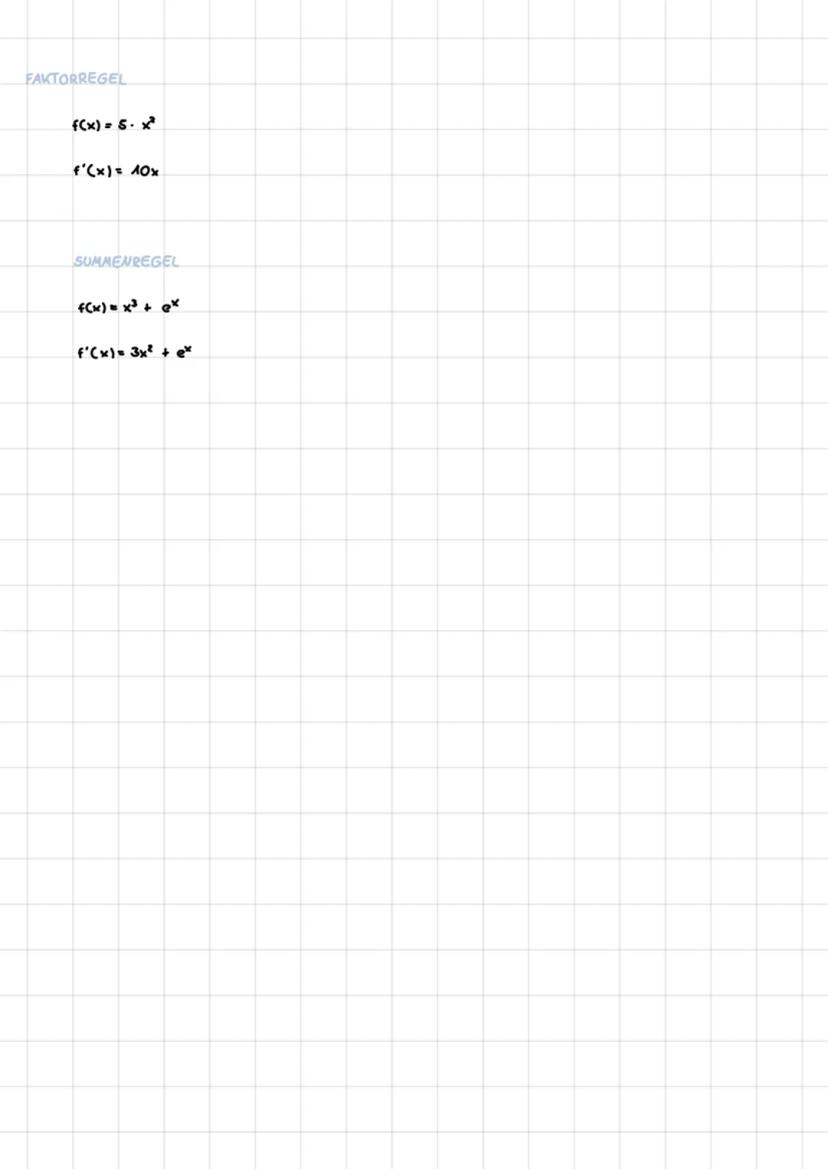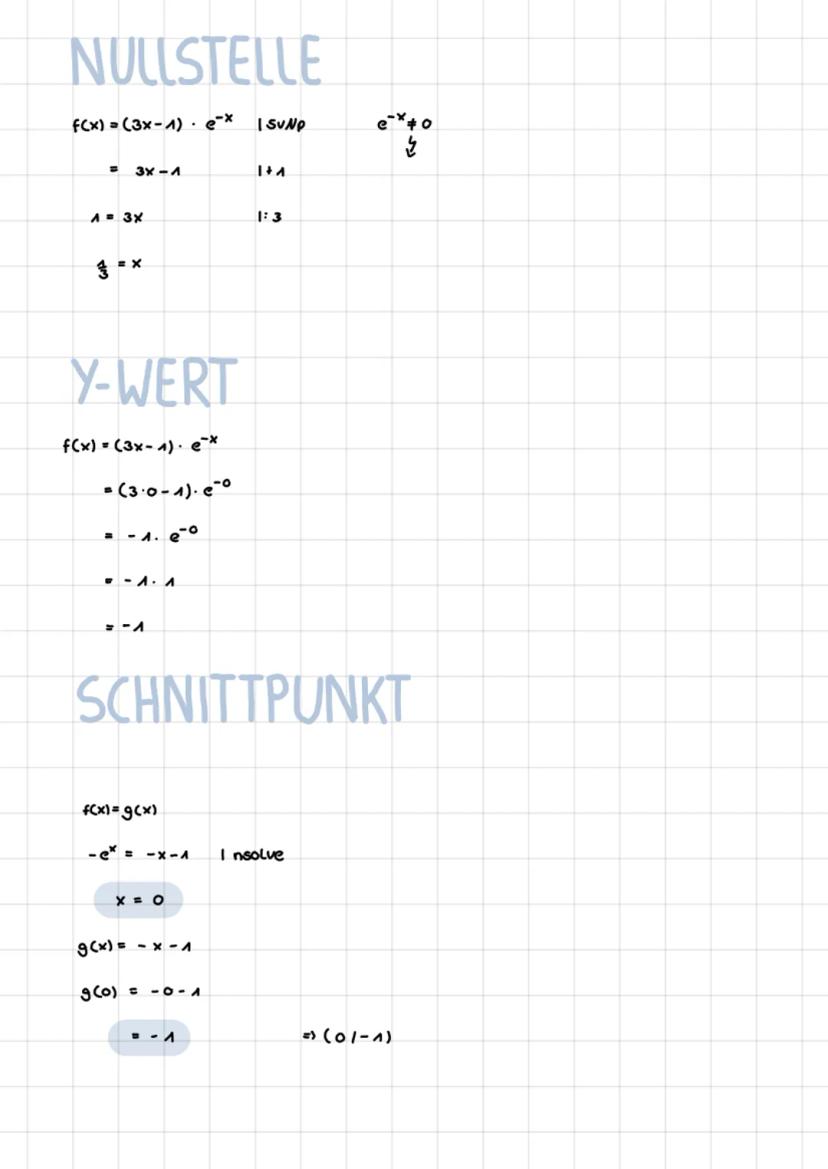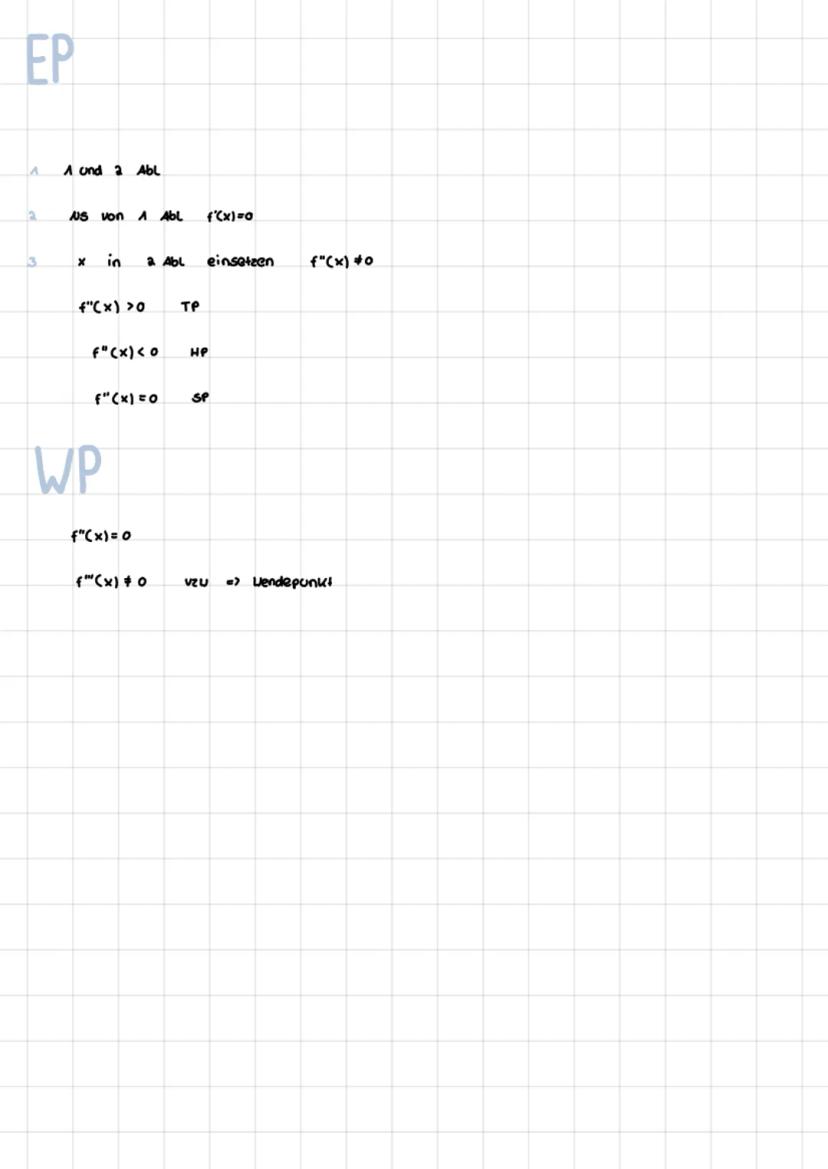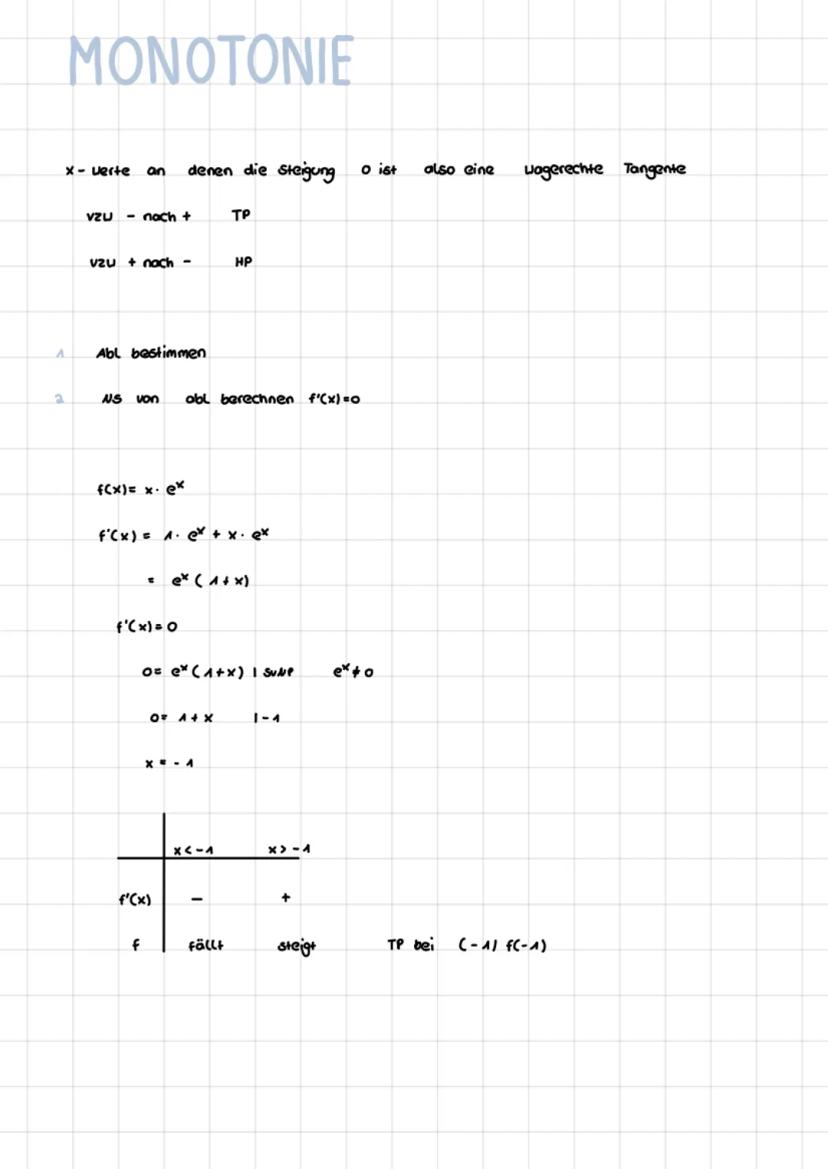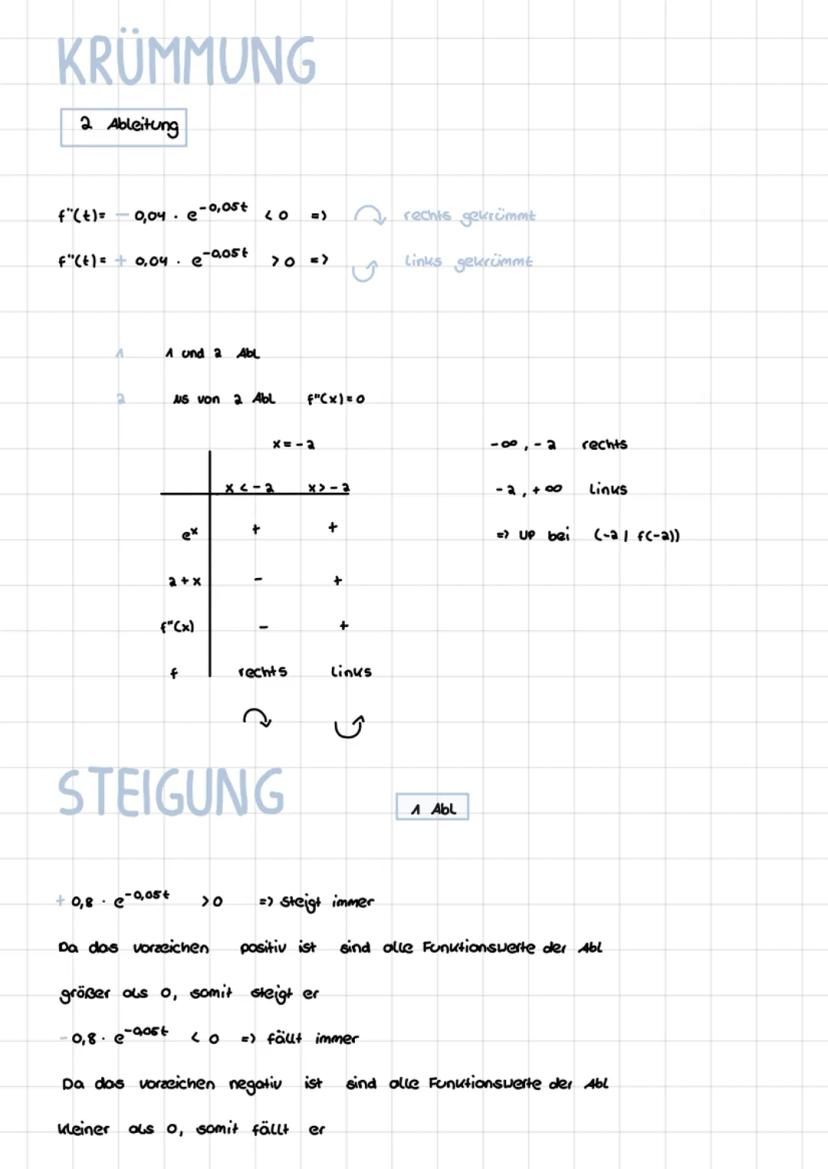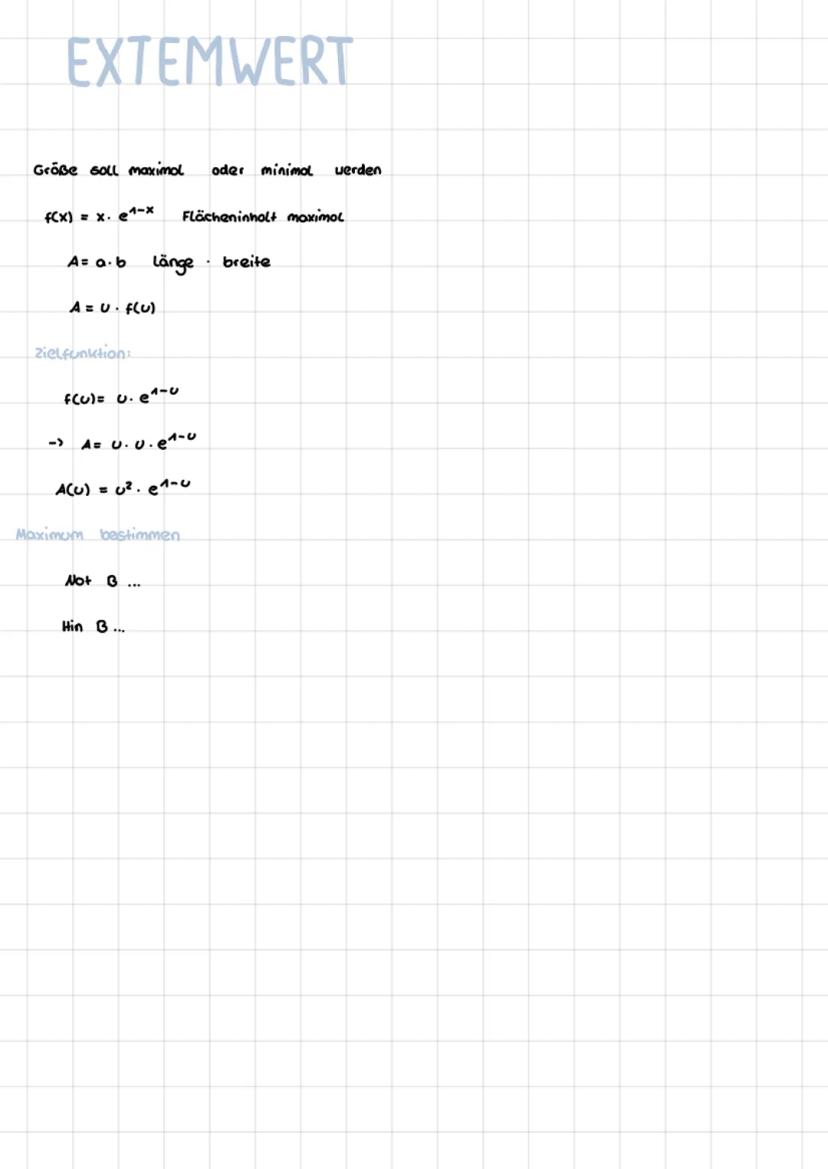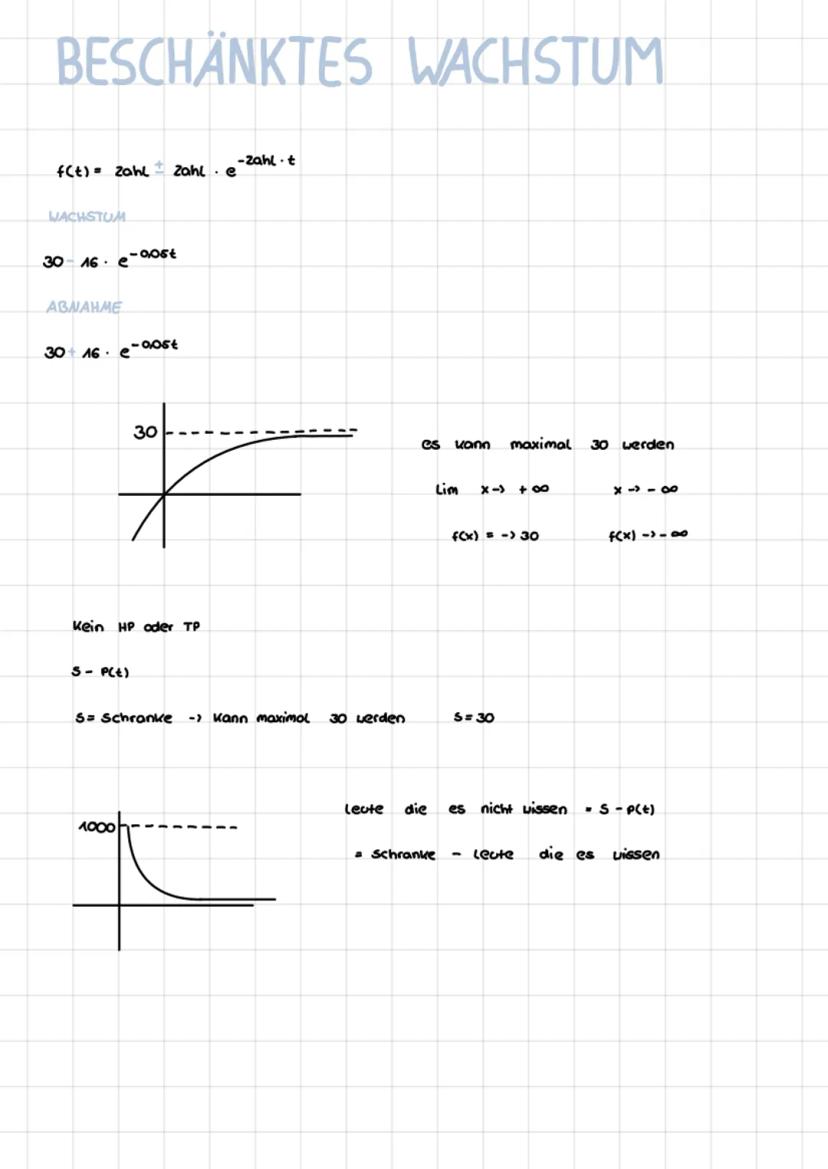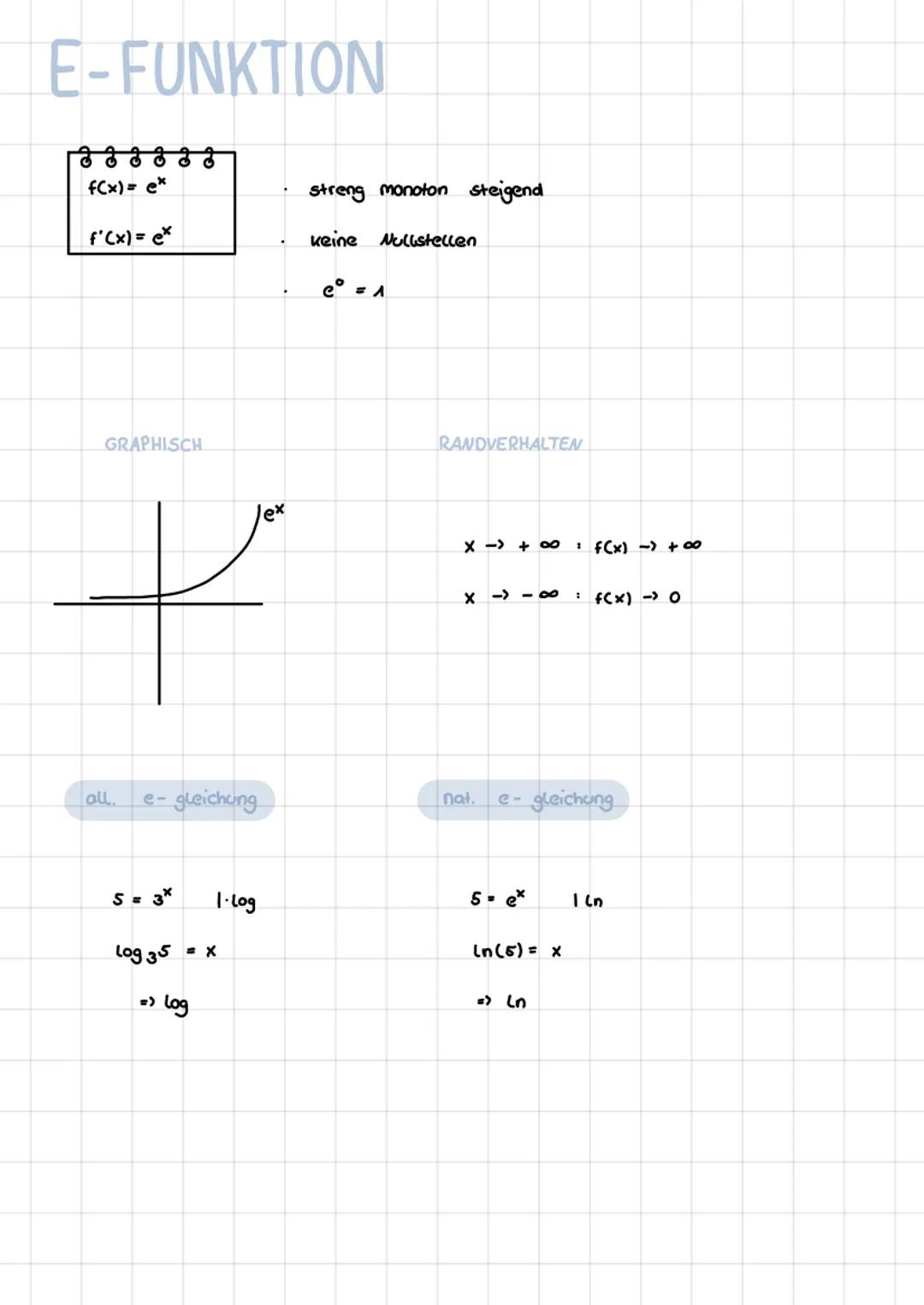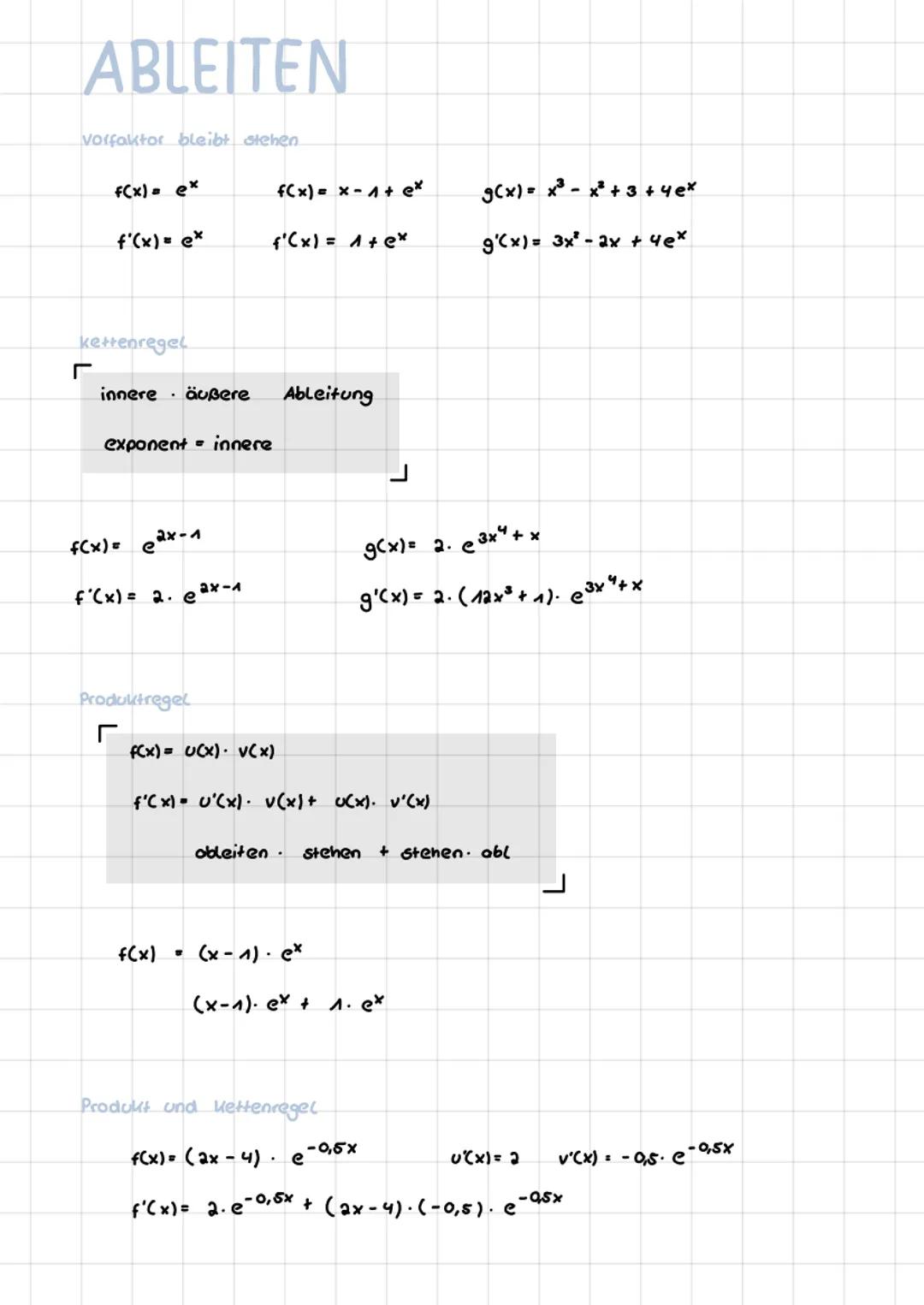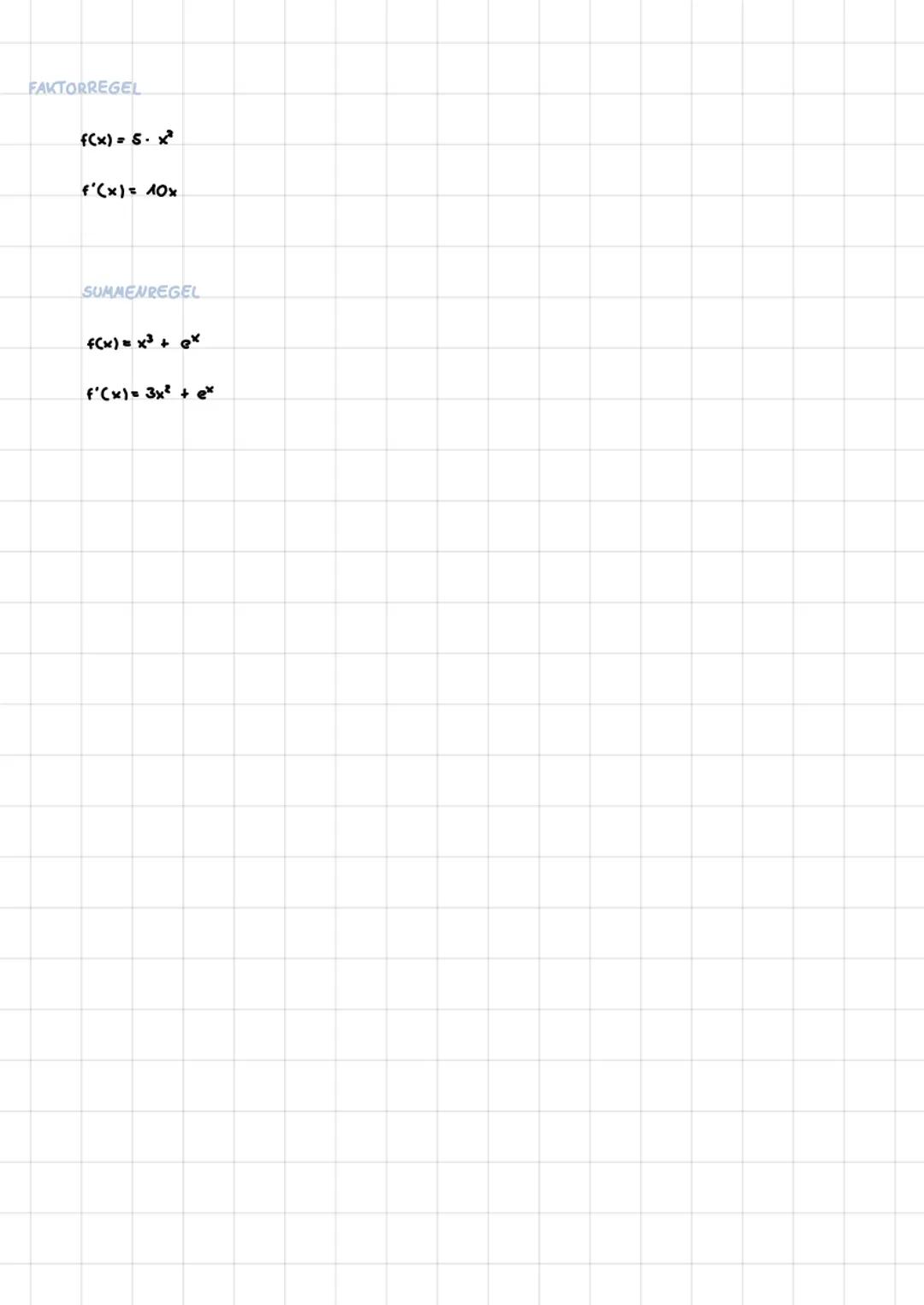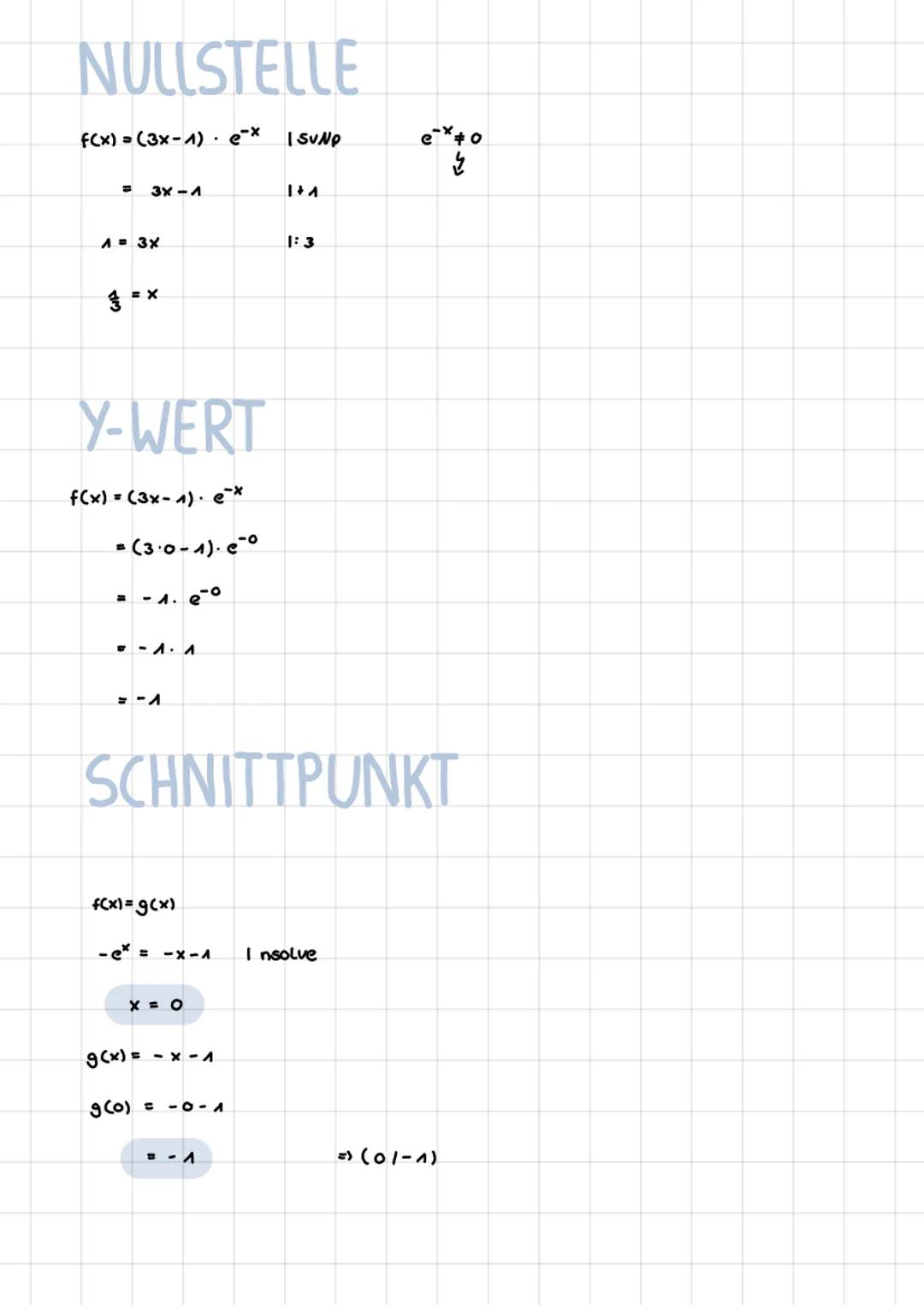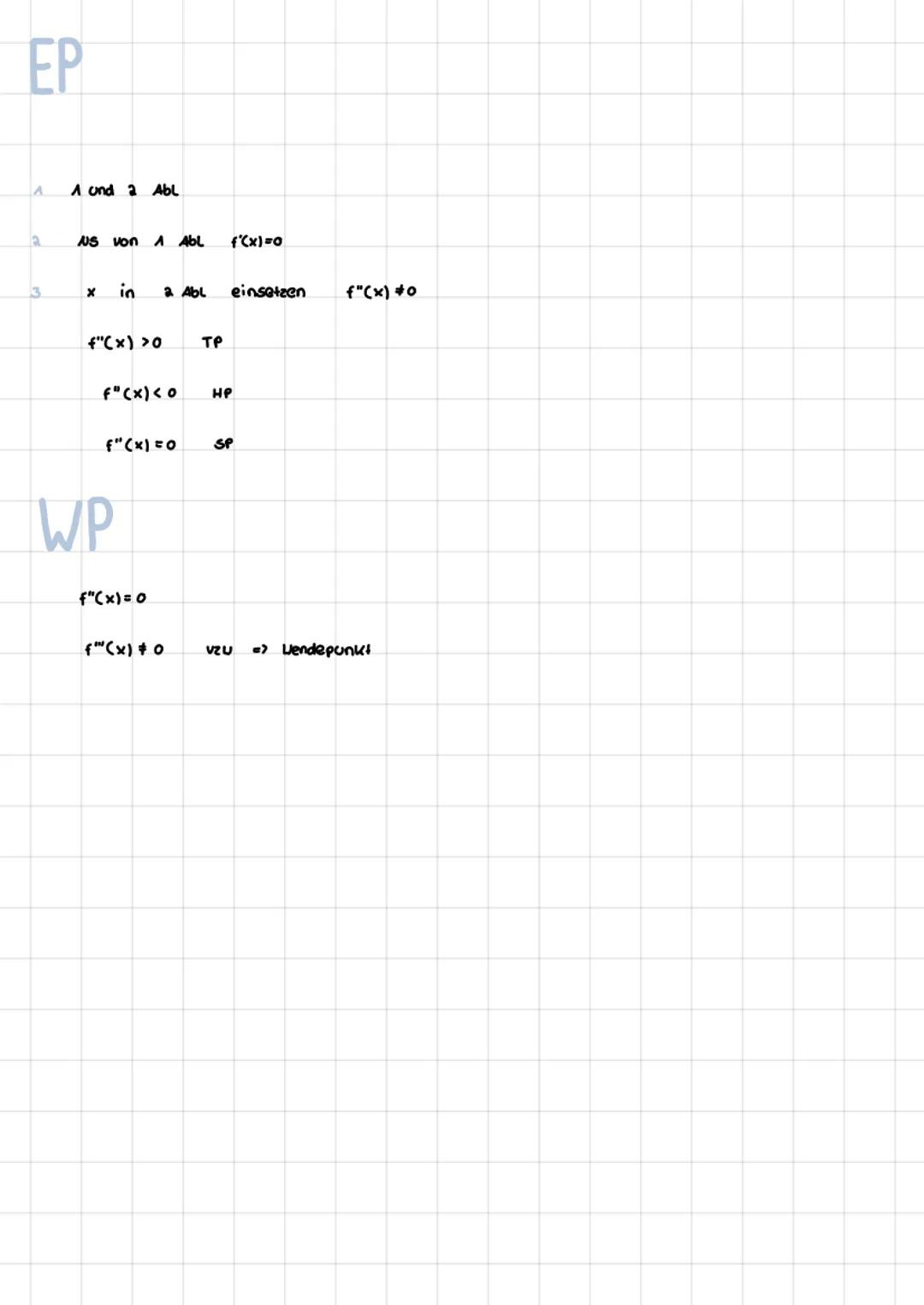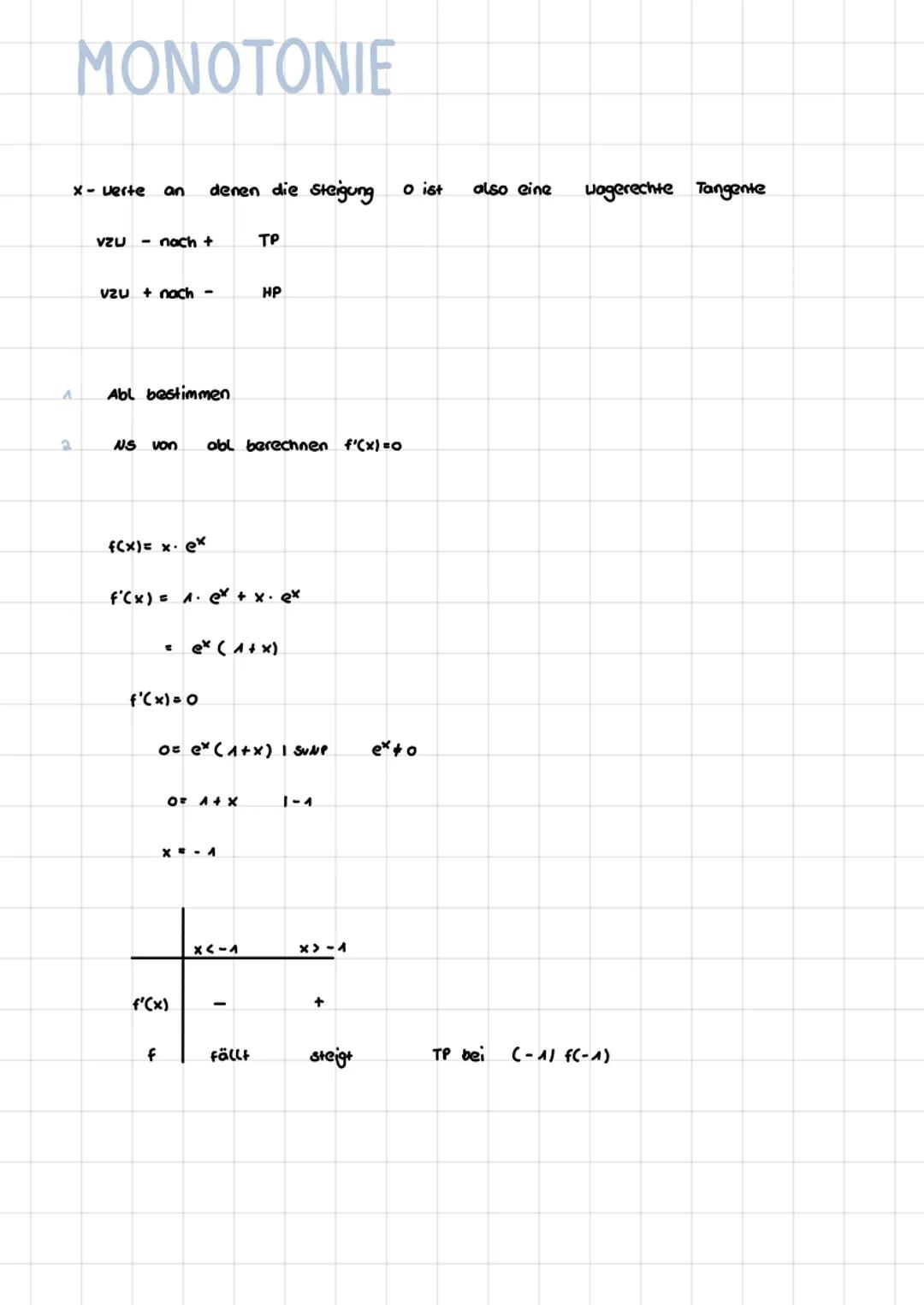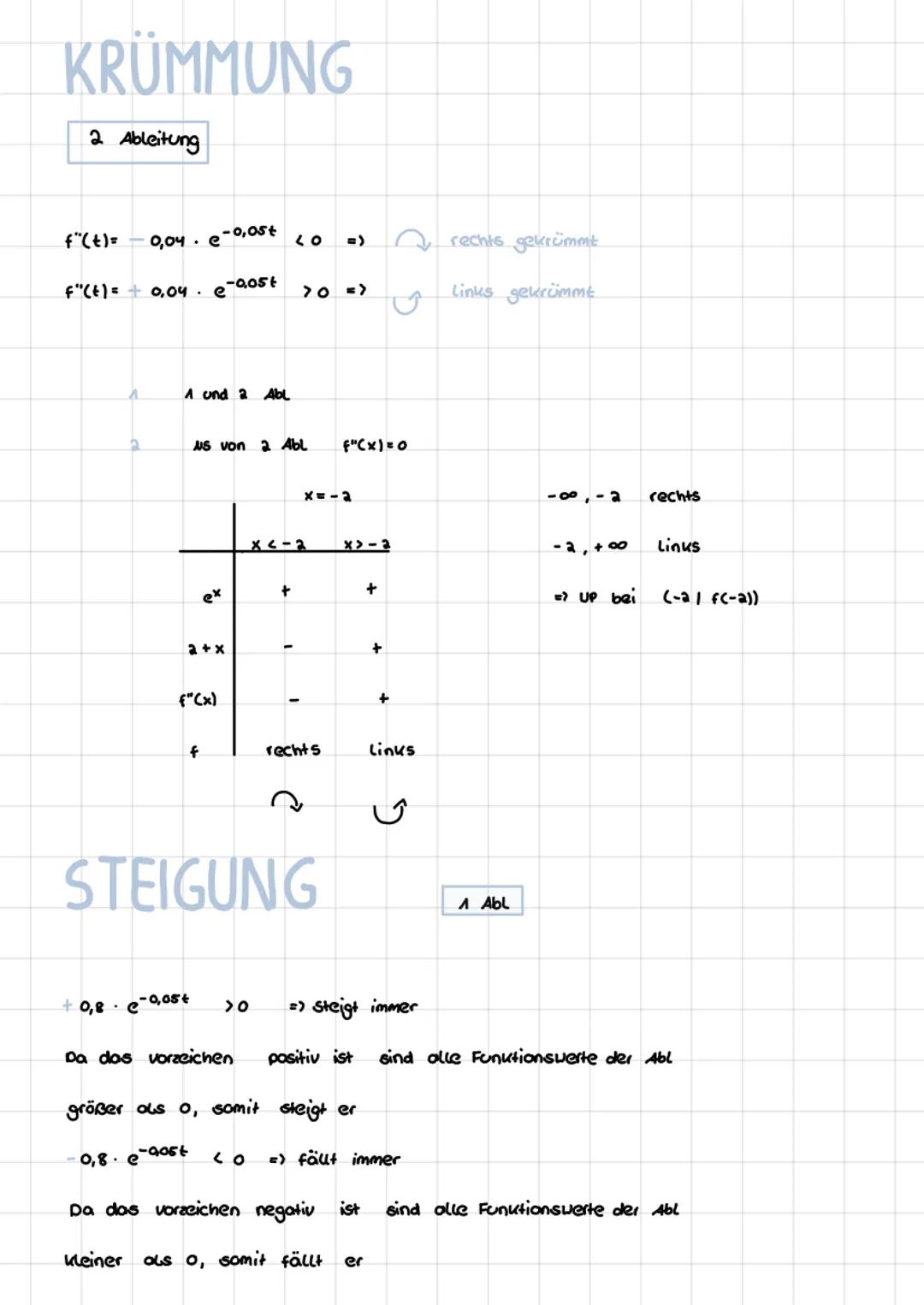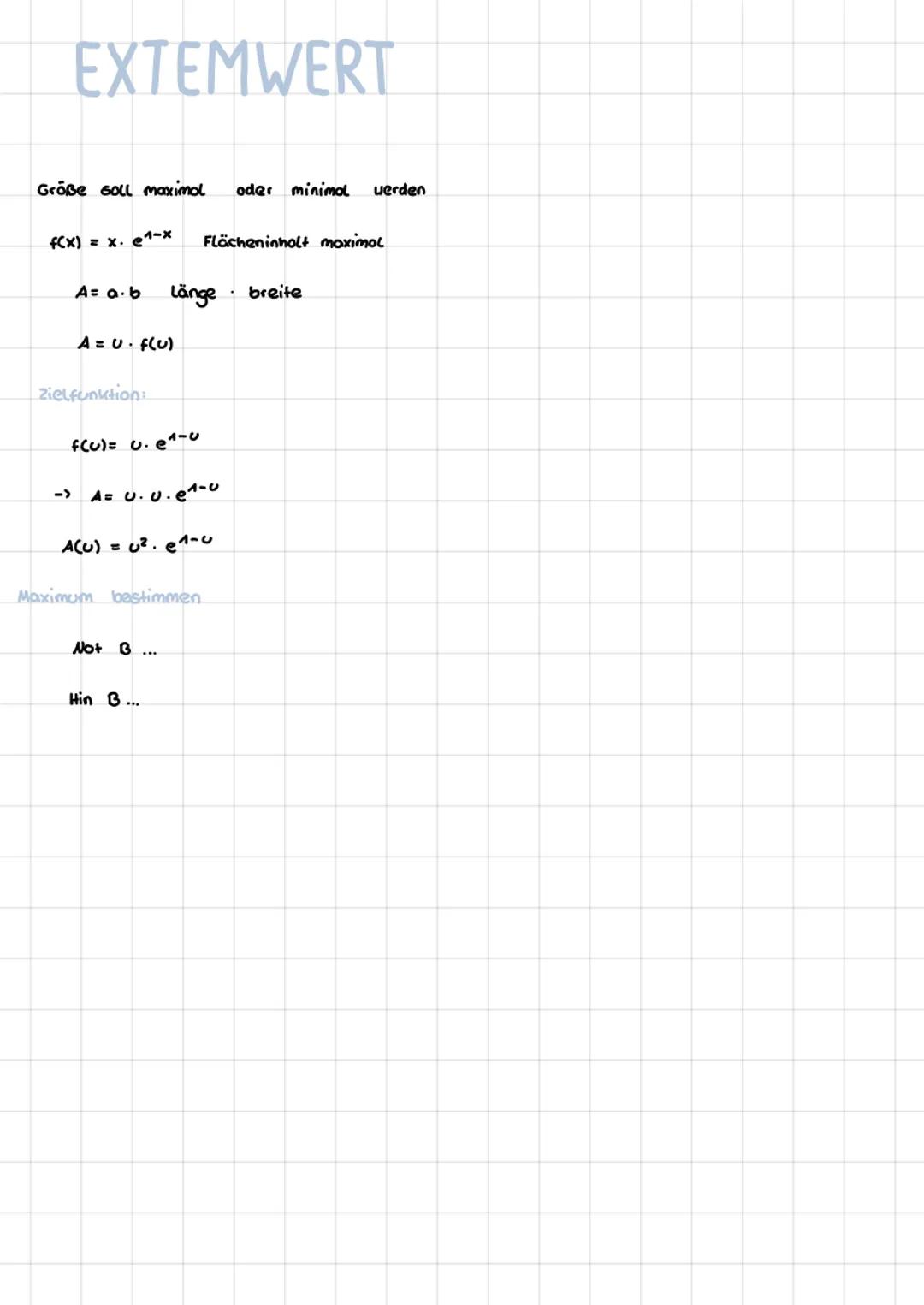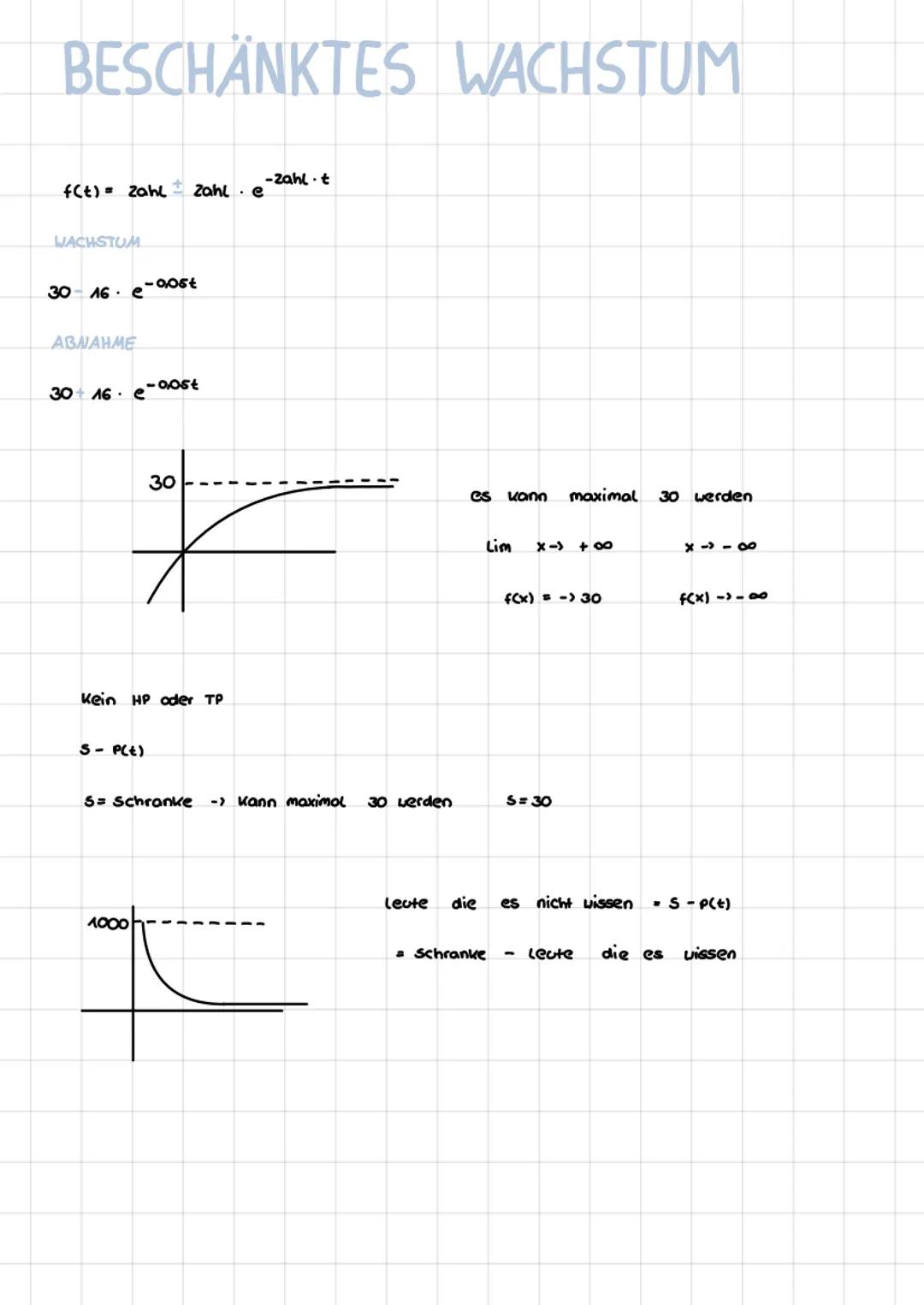The document provides a comprehensive guide on E-Funktion (exponential function) and its applications in calculus, focusing on differentiation, integration, and growth models. It covers key concepts such as the Produktregel (product rule), Kettenregel (chain rule), and beschränktes Wachstum (limited growth). The guide offers detailed explanations, examples, and problem-solving techniques for students studying advanced mathematics.
• The e-function is defined as f(x) = e^x, with its derivative being f'(x) = e^x.
• Various rules for differentiating e-functions are explained, including the product and chain rules.
• The guide covers finding zeros, y-values, intersection points, and analyzing function behavior.
• Integration techniques for e-functions are discussed, including improper integrals.
• Limited growth models are explored, showing how e-functions can model real-world phenomena.
• Advanced topics such as extrema, curvature analysis, and limit calculations are also covered.

